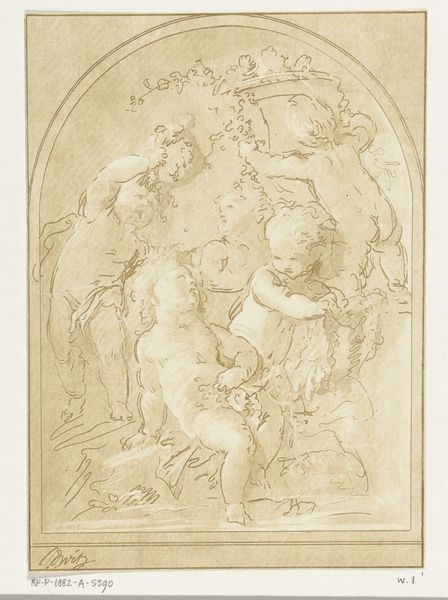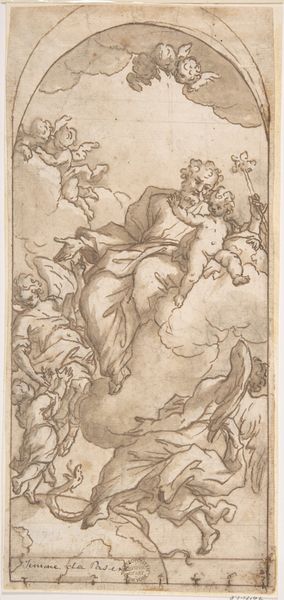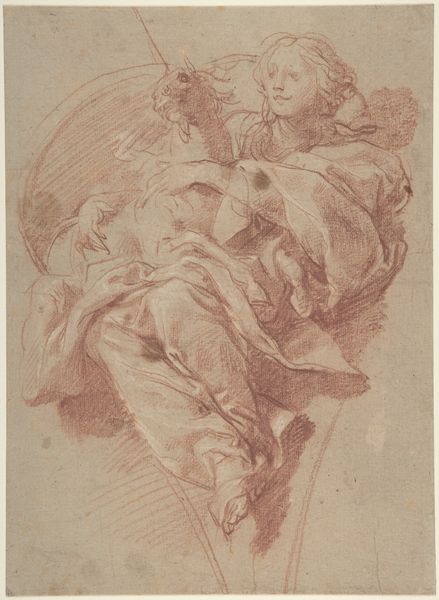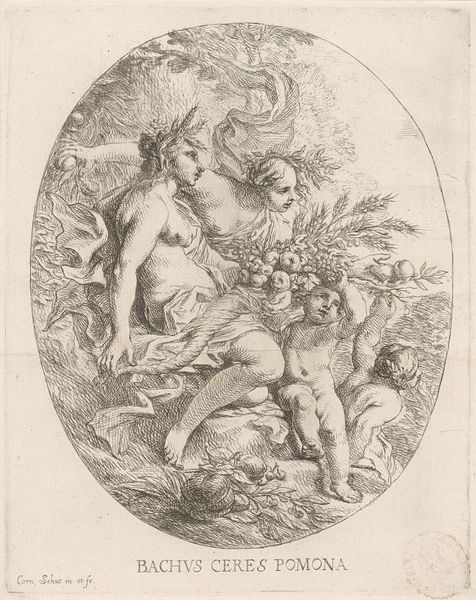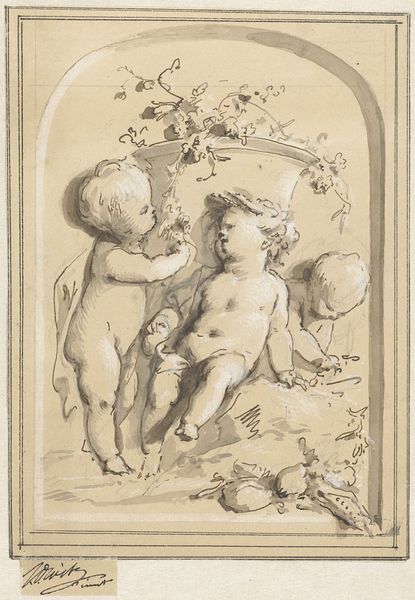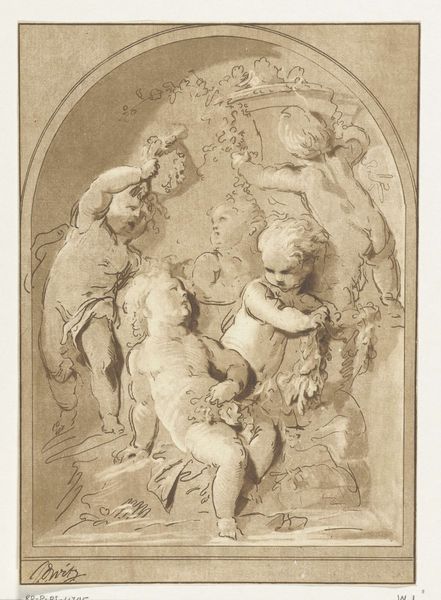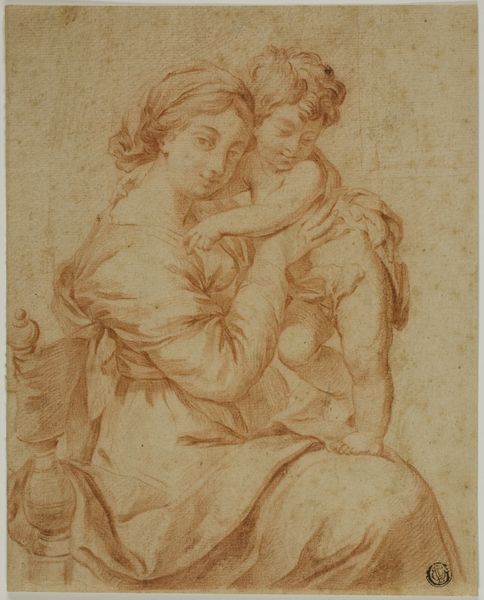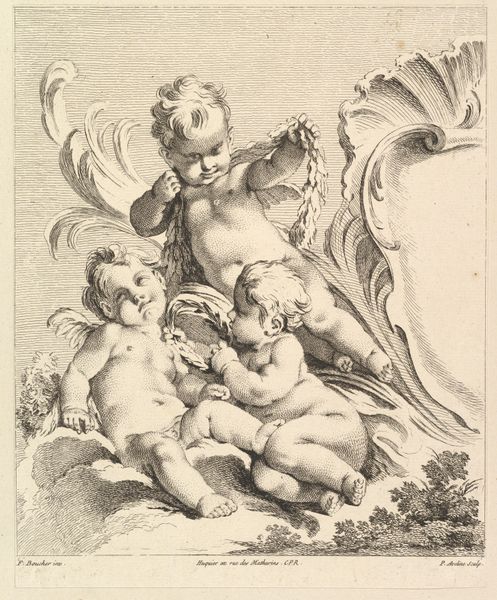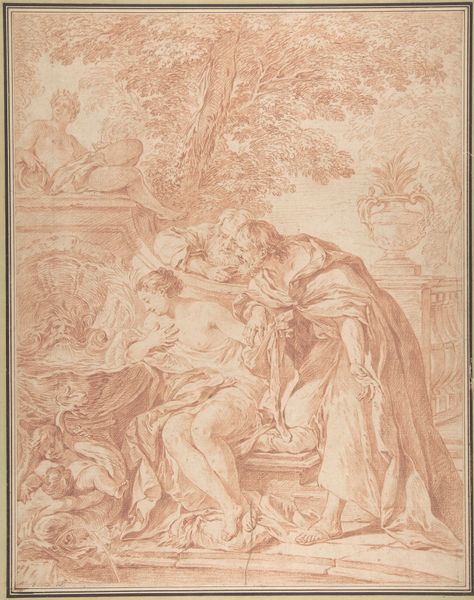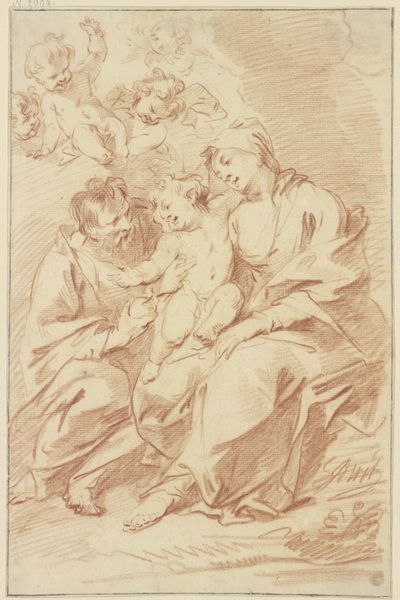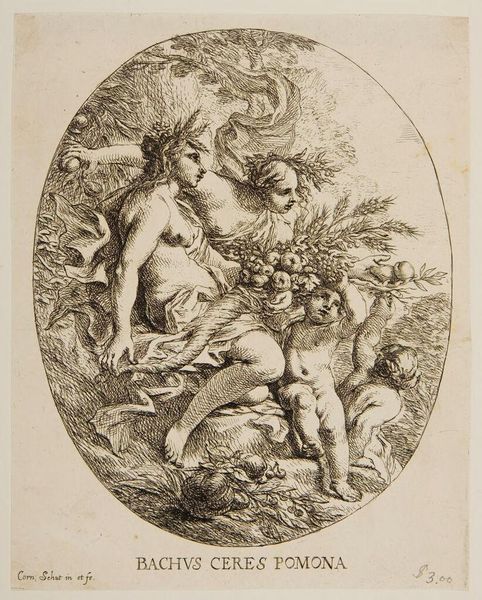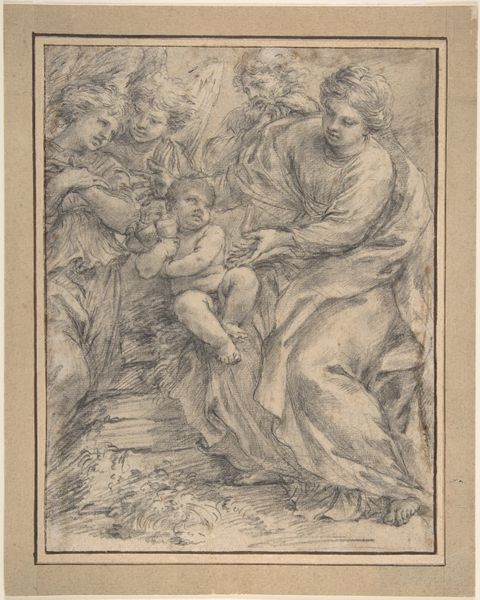
Design for a Panel with Four Putti Decorating a Herm (Terminal Figure) with Garlands of Fruit and Foliage 1715 - 1725
0:00
0:00
drawing, ornament, print, pencil
#
drawing
#
ornament
#
toned paper
#
allegory
#
baroque
#
ink painting
# print
#
pencil sketch
#
figuration
#
fruit
#
pencil
Dimensions: 16 1/8 x 6 3/4 in. (40.9 x 17.2 cm) (silhouetted into arch at top)
Copyright: Public Domain
Curator: Here we have "Design for a Panel with Four Putti Decorating a Herm (Terminal Figure) with Garlands of Fruit and Foliage" by Jacob de Wit, dating from around 1715 to 1725. It’s currently held at the Metropolitan Museum of Art. Editor: Okay, my first impression is just how wonderfully whimsical it is. Like a chubby little Renaissance dream. The reddish hue of the pencil and ink on toned paper gives it this immediate antique feel. It’s pretty busy but not overwhelming. Curator: Indeed. De Wit was a master of Baroque illusionism, and this drawing exemplifies his talent. In the context of the Baroque period, representations of putti were frequently used as allegorical figures, particularly in celebrations of worldly abundance. They also functioned as stand-ins for masculine power, wealth, and strength. It should come as no surprise that these figures frequently adorn palaces, courtrooms, and seats of governmental power across Europe. Editor: Masculine power, huh? Interesting, considering they’re cherubic babies. I get more of a mischievous vibe than anything particularly...powerful. They’re kind of clumsily adorning that...herm, is it? Curator: Precisely, a herm, a classical sculpture—typically a head or bust above a plain, usually squared, pillar. Its prominence during this era speaks to a fascination with antiquity but also the negotiation of power through representations of mythological or semi-divine figures. Editor: I see what you mean. Like, the babies are dressing up power itself. Playing with it. But you have this slightly demonic face at the top—maybe a faun? I love the contrast of that grotesque visage juxtaposed with the putti's angelic charm. Curator: Yes, exactly. That inherent tension speaks to a larger discourse of desire and fear, both within and beyond that time. And look at the garlands! All those fruits and foliage suggest growth and maybe the excesses related to earthly pleasures. Editor: Sort of a visual feast, in every sense. Makes you wonder about the actual panel it was designed for. Was it ever created? What grand room did it wind up in? Or was it simply an idea, perfectly captured in this sketch? Curator: Its destiny remains somewhat open, a silent yet important reflection on the aspirations and artistic ambitions of the period. I'm really glad we were able to delve into its many historical facets. Editor: Agreed! And I’m glad we didn’t take those babies too seriously. There's room for humor in even the most powerful artwork, don't you think?
Comments
No comments
Be the first to comment and join the conversation on the ultimate creative platform.
